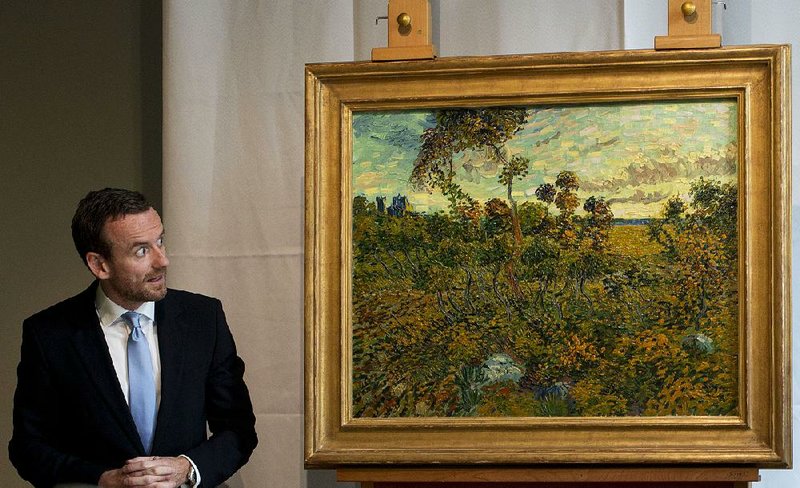AMSTERDAM - The Van Gogh Museum has authenticated a major painting by Vincent Van Gogh, its director announced Monday. The work, titled Sunset at Montmajour, was painted in Arles in 1888, a period that is considered to be the height of the painter’s career.
“For the first time in the history of the museum, that is in the past 40 years, a substantial capital new work of Van Gogh has been discovered that was completely unknown in the literature,” said the museum’s director, Axel Ruger. “We always think we’ve seen everything, and we know everything, and now we’re able to add a significant new work to his oeuvre.” He added, “It is a work from the most important period of his life, when he created his substantial masterpieces, like The Sunflowers, The Yellow House and The Bedroom.”
The painting depicts dusk in the hilly landscape of Montmajour, in Provence, France, with wheat fields and the ruins of a Benedictine abbey in the background. The area around Montmajour was a subject that Van Gogh explored repeatedly during his time in Arles.
A painting of this significance hasn’t been discovered since 1928, the Van Gogh Museum said
“One or two early Van Goghs do sometimes come out of the woodwork now and again, but from the mature period it’s very rare,” said James Roundell, an art dealer and the director of modern pictures for the Dickinson Galleries in London and New York, which deals in impressionist and modern art. Roundell said it would be hard to predict precisely how much this work would fetch on the market but expected itwould be “in the tens of millions and quite a few of them,” he said.
“It’s not the iconic status of something like the Sunflowers or the Portrait of Dr. Gachet,” he added, which sold at auction for $82.5 million in 1990.
Fred Leeman, a former chief curator of the Van Gogh museum and now an independent art historian and Van Gogh scholar based in Amsterdam, said the work contributes to an alternative understanding of the artist.
“We have the impression of Van Gogh as a very modern painter, but here he’s working in the tradition of 19th century landscape painting,” he said.
The painting has been in the private collection of a family for several years, and because of privacy concerns, Ruger said, he couldn’t release further information about the owners.
Until 1901, the painting was in the family collection once owned by Van Gogh’s brother, Theo, said Marije Vellekoop, the head of collections, research and presentation for the museum. Theo’s widow, Johanna Van Gogh-Bonger, managed that collection and sold it to a Paris art dealer.
In 1908, the art dealer sold it to a Norwegian collector, Vellekoop said. Shortly after that, Vellekoop added, “it was declared a fake or not an original,” and the Norwegian collector banished it to his attic, where it stayed until the current owners purchased it from him.
The current owners took it to the Van Gogh Museum in 1991, said Ruger, but at the time experts there said they did not think it was an authentic Van Gogh. Two years ago, the owners took it back to the museum to seek authentication, and researchers from the museum have been examining it ever since, Ruger said. The museum recently concluded that the work is a genuine Van Gogh painting because the pigments correspond with those of Van Gogh’s palette from Arles.
According to Louis Van Tilborgh, the Van Gogh Museum’s senior researcher, it was also painted on the same type of canvas, with the same type of underpainting Van Gogh used for at least one other painting of the same area, The Rocks, which is owned by the Museum of Fine Arts in Houston. The painting has a No. 180 on the back, which corresponds to the number in the inventory of Theo Van Gogh’s collection in 1890.
The date of the painting has been identified as July 4, 1888. In a letter Vincent Van Gogh wrote to his brother the next day, he seemed to have described the scene, calling it “quite romantic” and describing the sun as “pouring its very yellow rays over the bushes and the ground, absolutely a shower of gold.”
The painting will be on view in Amsterdam starting on Sept. 24 as part of the current exhibition. “Van Gogh at Work,” which focuses on other new discoveries about the painter’s artistic development.
Front Section, Pages 2 on 09/10/2013

